29/07/2016 North American P-51D Mustang US Army Air Force, Academy
The Head
of the Luftwaffe, Hermann Göring, was once quoted: „As soon as I saw the first
Mustangs over Berlin, I knew it was over“. Indeed, there is no doubt that this
fighter aircraft changed the course of WWII in Europe. The enormous range and
superior performance made it a perfect escort for the Allied Bomber squads.
Now they could fly all the way of their mission with fighter cover, something
that was not possible with other fighters of the time. And when the American
escort fighters changed their tactics from passive-defensive to preemptive
attack, it broke the Luftwaffe backbone.
But the story of the Mustang started relatively unspectacular. In 1940 the
Royal Air Force needed a replacement of the P-40 and North American Aviation
had spare capacity to build an all-new fighter aircraft. It had very refined
aerodynamics but was limited by its Allison Engine, the same engine used in
the P-40 (single-stage turbocharger and poor performance at high altitude).
The early Mustang perfomance was decent but not outstanding. This all changed
however when the P-51B type was introduced, with an American license-build
Rolls Royce Merlin engine, the Packard V-1650. With a powerful engine and
efficent aerodynamics, the Mustang was a big success. With the P-51D type
introduced in early 1944, the appareance of the aircraft changed dramatically.
The “Razorback” rear fuselage was removed and replaced by a bubble canopy that
allowed maximum visibility and reduced aerodynamic drag.
Performance-wise, the Mustang was at least equal or superior to the latest
versions of the Bf 109 or Fw 190. It could even hold its own against the Me
262 jet fighter as it was more agile. The last version, the lighter P-51H
arrived shortly after the end of WWII but the career of the Mustang was far
from over, the last ones were operated by the National Air Guard and retired
in 1957 – it still remained in service with some Middle-American countries and
was the last prop figher aircraft ever in service, only retired by the
Dominican Republic in the early 1980s ! Quite a lot P-51s are still airworthy
and can be seen in air shows all over the world.
When it comes to the Mustang, there is plenty on the market in 1/72 scale. I
think only the Spitfire has more kits in this scale ! This kit is from
Academy, a relatively new one and quite good detailed. Decaling options are
endless and I choose aftermarket decals from Peddinghaus. I decided to build
P-51D B6Y “Glamorous Glen III”, flown by Cpt. Charles “Chuck” Yeager of the
363rd Fighter Sqd. in late 1944.
Chuck Yeager named this aircraft after his girlfriend
and later wife, Glennis. Yeager scored 11 ½ victories during the war,
including one Me 262 jet fighter. Yeager, born 1923, stayed in the Air Force
after WWII and made it to the rank of Brigadier General until his retirement
in 1975. Maybe one of the most-known pilots of all time, he made history in
1947 when he was the first human to break the sound barrier in the Bell X-1
rocket aircraft. He remained in the public eye since then and worked also as a
consultant, speaker and lent his name for several Flight Simulator computer
games.

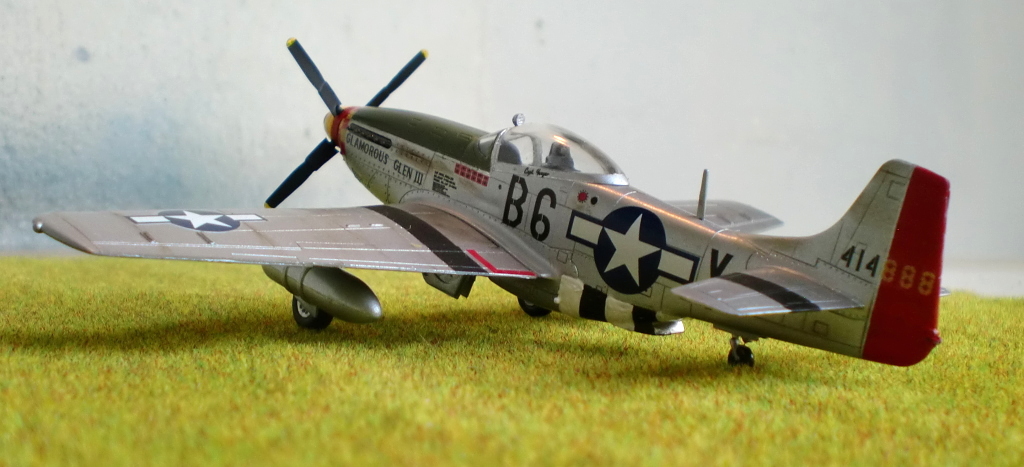


29/06/2016 Nakajima Ki-115 Tsurugi Japanese Army Air Force, Special Hobby
Kamikaze Attacks – Heroism or senseless acts of desperation ? A controverse
subject that is still discussed today, mostly in Japan of course. Poorly
trained pilots (many of them still teenagers) with obsolete aircraft were
sent against the Allied fleet – the Kamikaze attacks had little military
value but it was hoped to destroy the morale of the enemy – as this concept,
deeply rooted in Japanese military and Samurai rituals – was unknown to
Western culture.
In the final months of the Pacific War, with the Japan mainland already in
sight of the Allies, Kamikaze attacks increased. Potential Pilots were still
avaiable but the Japanse Army had to face the fact that they did not have
enough obsolete aircraft left for these attacks. Therefore an order was
given from the Japanese Army Air Force to design a purpose-build Kamikaze
aircraft. It should be easy and cheap to produce by unskilled labor, with
minimal use of strategic materials, and easy to fly. It was planned to be
build in huge numbers for large scale Kamikaze attacks.
Nakajima responded and the first Ki-115 Tsurugi (“Sabre”) prototype was
ready for flight testing in Spring 1945. As requested, the aircraft was of
rough and simple design; basically build from wood and steel, it could be
equipped with any radial engine avaiable. The stiff welded-tube landing gear
was jettisoned after take-off as there was no landing. Only arnament was a
fixed-installed 800kg bomb under the belly.
The flight tests, however, did not went well. The aircraft was difficult to
handle on ground and in the air, visibility was bad, and with the bomb
installed it suffered severe in performance. Several deadly crashes occured
in flight testing. Improvements were made with shock absorbers for the
landing gear and trailing-edge flaps, but the overall design was
unsatisfactory and not well thought out. It was unarmed and easy to catch
for Allied fighters. What if the pilot could not locate a target or had
technical problems ? Trying to crash-land with the bomb installed was
futile, ditching in water was not an option as Japan had no sea rescue.
Pilot and plane would be lost in any case.
Anyway, mass production of the Ki-115 was started and all these issues were
planned to be adressed in an improved design that was on the drawing board.
About 100 airframes were produced until the war was over – not a single
plane was ever used in combat. Only one Ki-115 is known to exist these days,
stored in the Garber Facility of the National Air & Space Museum in
Washington D.C.
The kit is another short run kit, this time from Special Hobby. It went to
together suprisingly well, maybe because it was rather simple, much like the
prototype aircraft.





05/06/2016 Messerschmitt Bf 108 Luftwaffe, Heller
The Messerschmitt Bf 108
“Taifun” could be considered as the grandfather of the modern general
aviation plane. Introduced in 1935 as a racing aircraft, the 4-seat Bf 108
was technologically very advanced for its time and broke a lot of aviation
records. The later versions were used as luxury travel or sports aircraft.
Designed by the Bayerische Flugzeugwerke in Munich (the company was later
re-named Messerschmitt, after their chief designer Willy Messerschmitt), the
all-metal Bf 108 was so sophisticated in it´s design , even most
contemporary fighter aircraft of the time looked obsolete next to it.
Featuring a lightweight monocoque fuselage, retractable gear and automatic
leading-edge slats, it foreshadowed the Bf 109 fighter in many ways. In
fact, both aircraft systems were so similar that the Bf 108 could be used as
a trainer for the Bf 109.
Although the Taifun was foremost a civilian aircraft, it found use in WWII
as a liasion aircraft by the German Luftwaffe and other Air Forces as well.
This particular Bf 108B KG+EM belonged to the “Sonderkommano Blaich” and was
based in Sicily and North Africa in 1942. It was owned by Theo Blaich, a
German adventurer and businessmen who, with Feldmarschall Rommels blessing,
operated a small special air unit (this Bf 108 and a He 111 bomber) that was
involved in attacking allied fuel supplies in Libya. There are a few good
photos of this aircraft avaiable so this particular Bf 108 is often seen as
a model. As in my case, the kit is from French manufacturer Heller. It is
rather old, not very detailled and has some inaccuracies, but is Ok for me
as I´m not a “rivet counter”. But a new up-to-date tooling would be fine.
Build straight out of the box.


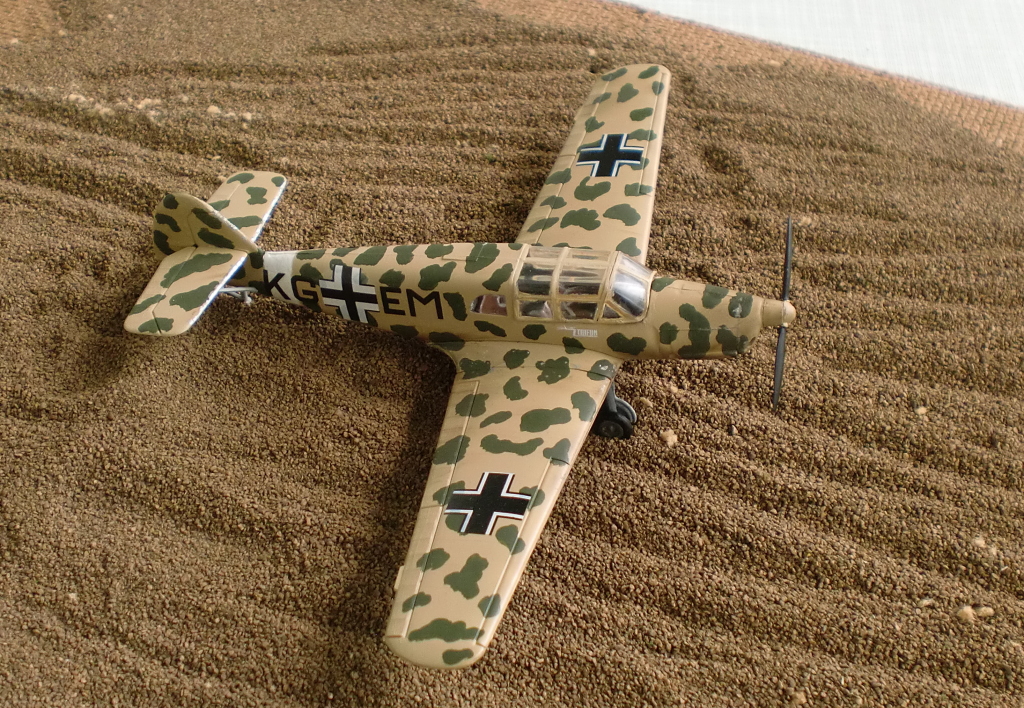
07/05/2016 Reggiane Re 2000 Falco Regia Aeronautica, Italeri
Of the 186
Reggiane Re 2000 Falco build, only a handful served in it´s Homeland Air
Force, the Regia Aeronautica (Italian Air Force). The type proved to be more
popular as an export model. When it had it first flight in 1939, it was the
most advanced Italian fighter aircraft at the time, outperforming the rival
designs from Fiat (G.50) and Macchi (MC.200) and it could hold its own against
the Bf 109 and Hurricane. However, the Regia Aeonautica rejected the design at
first – having concerns about the integral fuel tanks in the wings (not
self-sealing) and the unreliable Piaggo radial engine.
But the new fighter received interest from other countries, and fix orders
were received from Sweden und Hungary, the later one having the largest
contingent of Re 2000 fighters during WWII. Later a licensed modified version
was built in Hungary, called the Héja. Even the Royal Air Force showed
interest in the model for operations in North Africa, but the order fell
through when Italy allied with Nazi Germany. The design problems of the Re
2000 –the wing fuel tanks and the engine- still remained and caused trouble.
12 of the later Re.2000 GA models (with longer range) were accepted finally by
the Italian Air Force and organised into an experimental squadron, the 377a
Squadriglia Autonoma based in Sicily, where they were used for bomber escort
missions in the Mediterranean Sea. Missions included bomber escorts against
Malta or targets in North Africa, where the long range of the Re.2000 GA was
an advantage. The service record was rather unspectacular though; no kills
were recorded and the planes were phased out soon.
To rectify the Re.2000 engine problems, Reggiane engineers installed the
German DB 601 in-line engine into a prototype and a new version, the Re.2001
was born; it was much more succesful and went into full production soon, with
the DB 601 engine built in license by Alfa Romeo.
This models represents the “red 4” of the 377a Squadriglia Autonoma, based in
Sicily in early 1941. The kit is from Italeri and build out of the box. A nice
kit for a rather obscure aircraft.


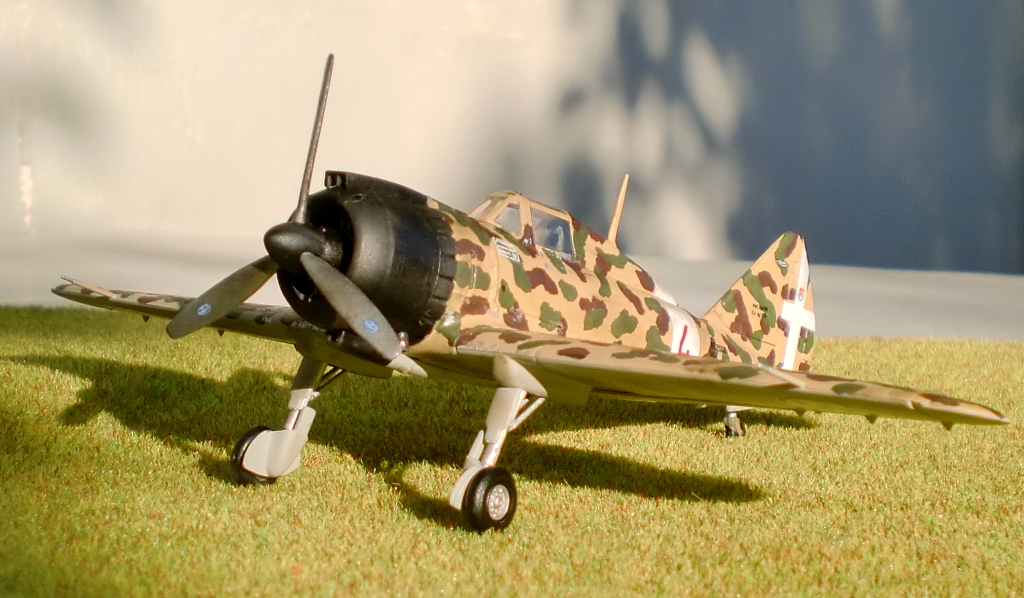
20/04/2016 Kyushu J7W1 Shinden Imperial Japanese Navy, Hasegawa
Towards the
end of WWII, not only the Luftwaffe was developing so-called “wonder weapons”
or “special attack weapons”, but the Japanese as well. Some of these kits are
on my pile and will show up here sometime. Dealing with high-altitude bombers
was a challenge for the Japan Air Forces as well, and unless in Europe, the
B-29 bomber was deployed on a regular basis in the Pacific War. To counter it,
the small Kyushu aircraft works developed an highly unusual and radical
interceptor aircraft, the Kyushu J7W1 “Shinden” (“magnificient lightning”).
The brainchild of Lt.Cmdr. Masayoshi Tsuruno, a technical staff officer of the
Imperial Japanese Navy, the Shinden was a canard-design aircraft with a
propeller in the back, used in a pusher configuration. This concept promised a
clean, aerodynamic fuselage with 4 autocannons in the nose, providing powerful
concentrated firepower, and high agility and speed – the perfect combination
for a bomber interceptor. Top speed was calculated at ca. 470 mph.
The first short test flight took place on August 3rd, 1945, followed by two
other test flights. While the flights were successful, there were a lot of
serious design shortcomings that had to be fixed. The aircraft was difficult
to fly, with longitudinal instability and strong vibrations in the driveshaft
due to the powerful engine. It has a tendency to pull to starboard due to
engine torque, and one big problem was cooling the radial air-cooled engine on
the ground as it was installed in the rear. The whole canard concept was new
and untested and the Japanese really had to do pioneering engineering work
here. Could they have solved all problems ? We will never find out, as they
war ended only a few weeks later and the Shinden never flew again. Two
aircraft were build, one was scrapped and the other taken to the United
States. It is now stored, in unrestaurated condition, at the National Air &
Space Museum in Washington, D.C.
In the end, three test flights were performed with a complete flying time of
about 45 min. The aircraft was never tested at high altitude or at high
speeds. A real performance evaluation was not possible. This Shinden
configuration was an intermediate solution anyway; later types were supposed
to have a turbojet engine installed. This version, of course, never left the
drawing board.
“Exotic” aircraft models are usually reserved for the short run kit makers, so
it´s nice to see that a major manufacturer, Hasegawa of Japan, released this
kit a few years ago. Nice kit. Not much to do in terms of paint variation or
weathering as there were only two prototypes. I still cannot believe this
aircraft is over 70 years old – it still looks futuristic today, don´t you
think ???


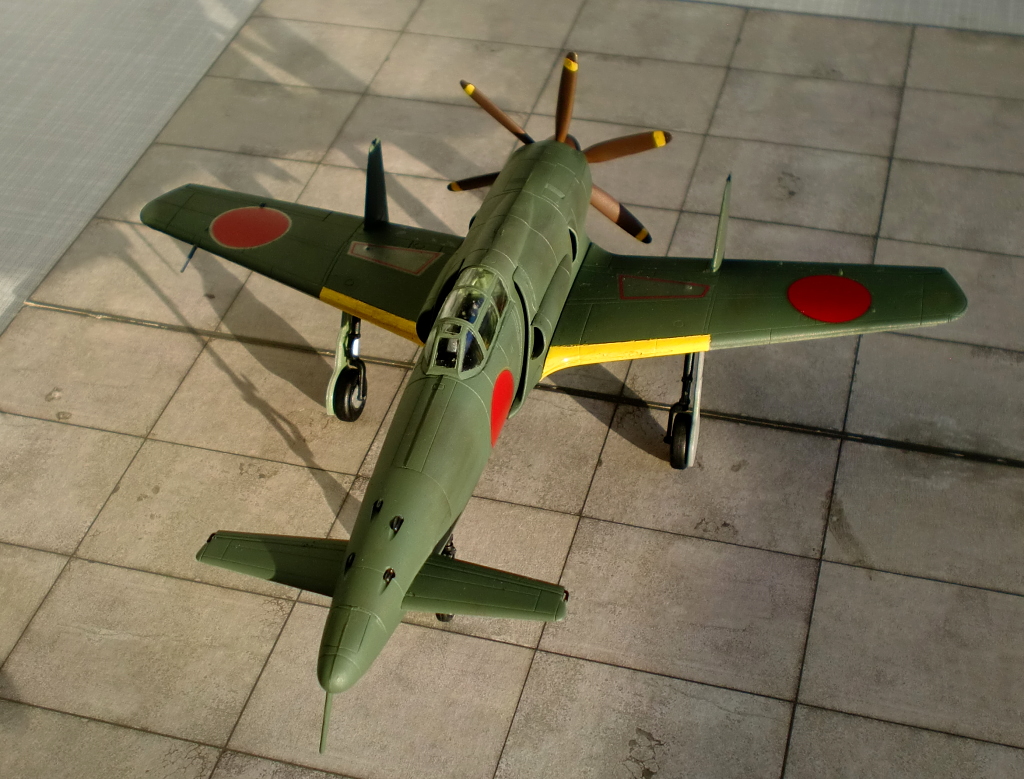

28/03/2016 Focke Wulf Ta 152 H-1 Luftwaffe, Aoshima
Introduced only a few
weeks before the end of WWII in Europe, the Focke Wulf Ta 152 was the most
advanced prop fighter aircraft of the Luftwaffe; in fact it was one of the
most sophisticated fighter aircraft overall designed during the war. Based on
the succesful Focke Wulf Fw 190 design, the Ta 152 (named after it´s designer,
Prof. Kurt Tank) was supposed to be a new family of multi-role fighter
aircraft, but only one version, the Ta 152 H (high altitude interceptor) ever
went into limited production.
During late 1944, the Luftwaffe expected that the US Army Air Force would
deploy the B-29 high altitude bomber to Europe (it did not happen after all),
and there was no adequate Luftwaffe aircraft to engage it – all German
fighters at the time experienced a dramatic decrease in performance at very
high altitudes. The Focke Wulf Fw 190-D9 was an interim solution, but Prof.
Kurt Tank felt there should be a more radical approach to the problem.
Therefore the Fw 190 fuselage and wingspan were stretched considerably and a
more powerful engine developed, a pressurized cockpit was installed and three
autocannons should take care of any enemy bomber. This was the basic design
outline for the Ta 152 H.
Pilots testing the prototype aircraft were impressed by the superior
performance. It was able to reach a topspeed of 472 mph at an altitude of
41.000 ft; even at sea level it could outperform any other fighter at the
time. But Germany´s manufacturing capabilities and resources were in chaos in
early 1945; it is estimated that overall 49 Ta 152 were build and only 16
aircraft were ever delivered to JG 301, a Reich defense unit and the only
squadron operating the Ta 152 H. Ironically they were never used in high
altitude operations during the few weeks they were in the field.
This Ta 152 H-1 (the only production version), “green 9”, was flown by
Oberfeldwebel Willi Reschke of Stab/JG 301. Reschke claimed 27 victories
during the war, and his last three were with this aircraft in April 1945.
Reschke, now 94 years old, wrote a book about the history of JG 301 and his
experiences as a fighter pilot, I´m currently reading it – quite an
interesting book.
The kit is from Japanese manufacturer Aoshima, a rather nice one but a little
hard to get – once again I bought one from Japan on Ebay. A few decals are
used from the kit and a few from the aftermarket. The German mottle camouflage
is always a hard one for me to paint or airbrush but it should look Ok enough
in this scale although this could be done much better (by a more skilled
modeler…)
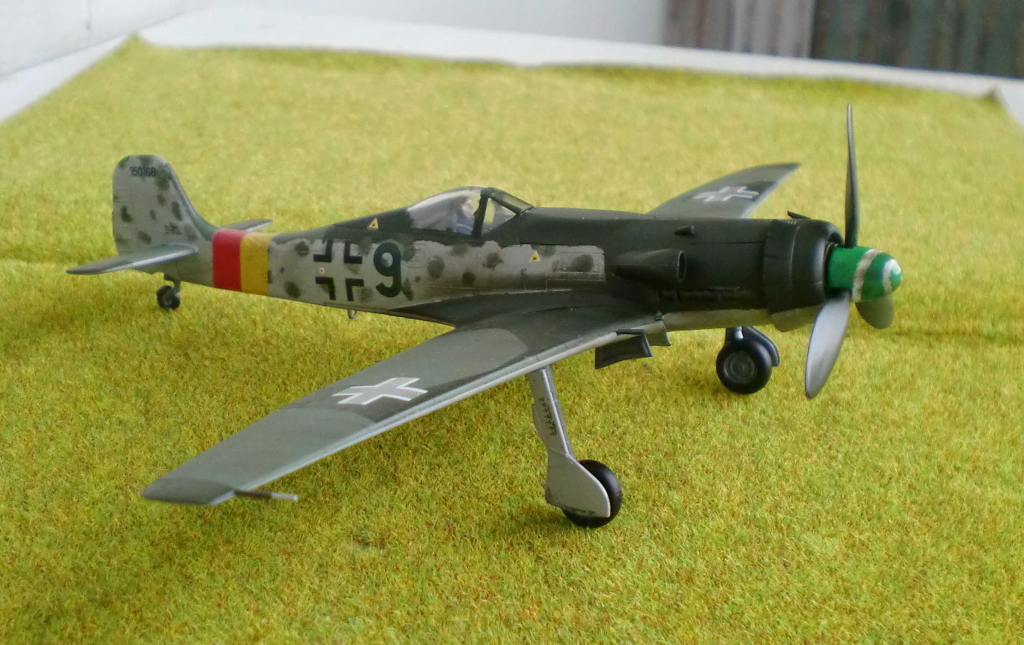

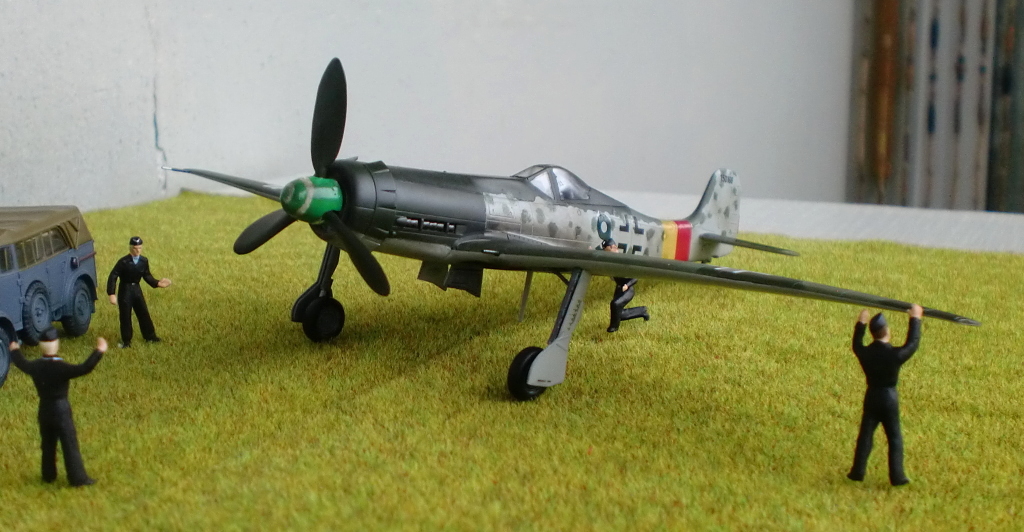

13/03/2016 Grumman F6F Hellcat US Navy, Academy
With the arrival of the
Grumman F6F Hellcat, the tides finally turned for the Allies in the Pacific
War. Now they had an fighter aircraft that was equal, and in most cases
superior, to the Mitsubishi Zero. While the Zero still had an advantage in
lowspeed dogfighting and range, the Hellcat was better in performance, speed,
firepower and ruggedness. Its basic design was so good that only very few
modifications and variants were introduced in the production; this was rather
rare for a combat aircraft at the time. The basic version F6F-3 was followed
by the F6F-5, it had a more powerful engine, a few cowling design changes and
a modified cockpit glazing. There was also a nighter fighter version, and that
was it basically.
But the time as a frontline fighter was rather short for the Hellcat.
Introduced in 1943, it was replaced by the Bearcat in late 1945 (shortly after
WWII ended) and it was relegated to secondary and Reserve duties. 12.275
aircraft were build between 1943 and 1945.
For this model I used an aftermarket decal set from LF Models. It shows F6F-5
Hellcat #76 from VBF-87, delivered to the USS Ticonderoga in May 1945. It was
the 10.000th Hellcat build and had a special sticker on the cowling. It was
flown by the CO of VBF-87, Commander Porter Maxwell. The kit is from Korean
maker Academy and a really good one. I used Tamiya glossy dark blue paint and
I think it turned out rather well. The Navy dark sea blue can be hard to match
at times.




24/02/2016 Yakoklev Yak-1b Red Army Air Force, ZTS Plastyk
The Yakoklev
Yak-1 was the first modern fighter aircraft by the Soviet Union at the
beginning of WWII. A composite wood/metal design with wooden wings, it was
fast and well-armed and a good match for the early Messerschmitt Bf 109
versions it encountered during the German invasion. The Yak-1 was the first
aircraft in a series of Yak fighters; it was followed by the similar-looking
Yak-3, Yak-7 and Yak-9 versions. All in all over 37000 aircrafts of this
family were manufactured, making it the most produced Soviet fighter design in
WWII.
The original Yak-1 was later succeeded by the Yak-1b version with lowered rear
fuselage and a bubble canopy as seen on this model. This Yak-1b from 73th
GIAP, “White 23” was flown by Lydia Litvyak, the top women fighter ace of all
time, in Summer 1943.
The Soviet Air Force was the only air power at the time allowing women to
become fighter pilots; Lydia Litvyak was one of only two women to gain ace
status with 14 victories. A rather famous person in the Soviet public at the
time, she was shot down by a German aircraft and killed August 1, 1943, aged
21, during the Battle of Kursk. But her fate was unclear for quite some time.
The crash site was only found in 1979 and it was concluded she was not
captured after the crash; therefore she was eligible for the highest Soviet
decoration, the Hero of the Soviet Union. She received the award posthumously
in 1990.
Yak-1 kits are rare in 1/72 and this one is from Polish company ZTS Plastyk.
It ist really old and dates back to the Eastern bloc era, maybe that is the
reason why the moulding is so bad, probably the worst I have ever seen until
now. Almost no details, brittle plastic and misaligned parts all over the
place. The canopy broke and I replaced it with a vacuform one for a Yak-3
(they look the same). Decals are aftermarket from Balkan Decals.
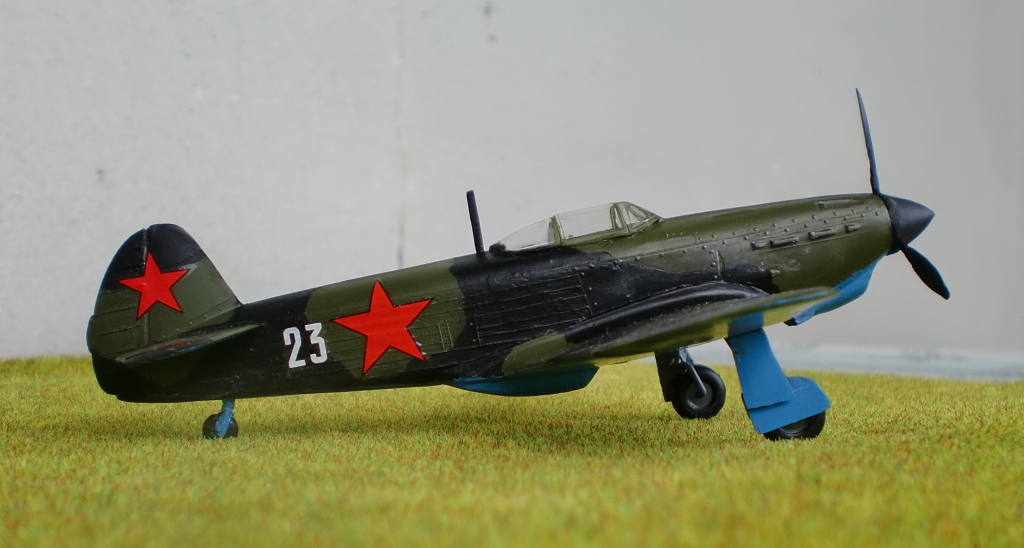



24/01/2016 PZL P.11 Polish Air Force, Mistercraft
It is astounding how
fast Aviation technology advanced in the 1930s and 1940s. Literally within a
decade aircraft evolved from biplanes to jets. This also had the effect that
once state-of-the-art aircraft designs were obsolete only a few years later.
This is what happened to the P.11, a monoplane fighter build by the Polish
state-owned aircraft manufacturer PZL in Warsaw.
When it was introduced in 1934, it was considered one of the most advanced
fighter designs in the world. Based on the similar-looking P.7, it was an
all-metal construction and featured the distinctive, high-mounted inverted
gull wing design (named after its designer, Z.Pulawski). It was very fast
for it´s time, highly maneuverable and sturdy. This basic design was also
used for later Polish designs, such as the P.24 with a closed canopy.
Unfortunately Pulawski died in 1931 and this was a big blow for PZL as they
lost their most talented aircraft designer – a loss they could never
compensate. New aircraft designs were in development but not ready when WWII
broke out.
The P.11 was still on active duty and the main fighter of the Polish Air
Force when Germany invaded Poland in September 1939. By this time, the P.11
was hopelessly outdated and worn out from long service use. Nevertheless the
P.11 was able to score considerable kills, mostly against German bombers but
also against the much better armed and faster German fighters. This was
remarkable as the P.11 was so slow it could rarely catch up with German
aircraft, as they were much newer designs. But in the end Polish losses were
heavy. Some captured aircraft were later used for training purposes by the
German, Soviet and Romanian Air Forces. Only one aircraft survives and is
now displayed at the Aviation museum in Krakow.
This kit is from Polish manufacturer Mistercraft and the mould dates back to
the 1980s. It´s not very detailled and a really quick build. It depicts a
unit from the 111th Fighter Sqd based in Warsaw-Okecie in 1939. A nice model
I think, and i´ts fun do so something “exotic” rather than another Mustang
or Spitfire.
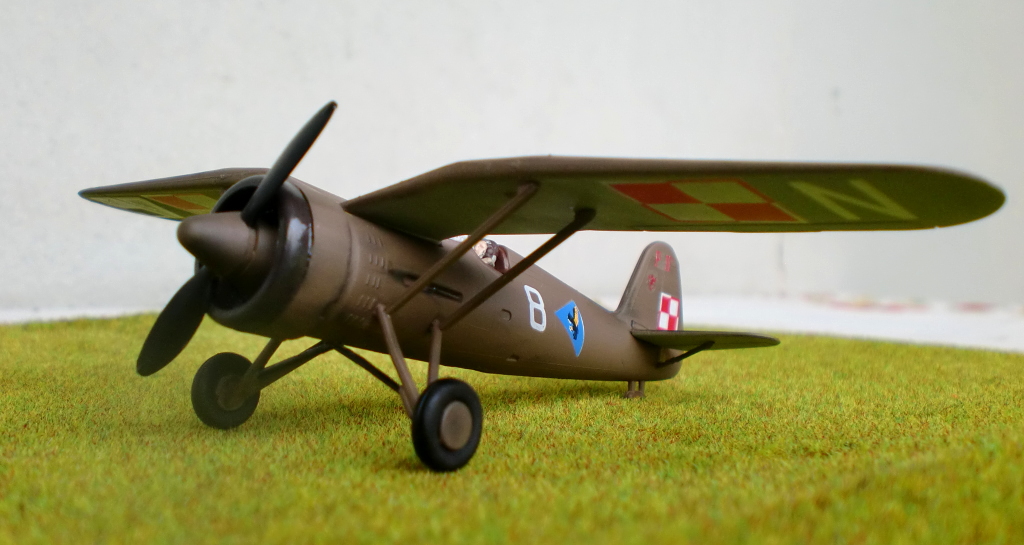


01/01/2016 Curtiss P-40 Warhawk US Army Air Corps, Airfix
Happy new year !
It starts off with another new build.
The Curtiss P-40 Warhawk (and the subsequent versions) was the standard
fighter aircraft of the USAAC at their entry into WWII in 1941. The lack of a
powerful supercharger made it unsuitable for high-altitude operations;
therefore the P-40 was rarely seen in the European theater but it was widely
used by US and Commonwealth Air Forces in North Africa, Asia and the Pacific,
where it was the first American fighter to encounter the Japanese Zeros – at
the raid of Pearl Harbor in December 1941. Although the Warhawk was outclassed
by the nimble Zero in low-speed dogfights, it was faster and superior in
highspeed aerobatics. A very tough design that could withstand a lot of damage
(unlike the fragile Zero) it proved itself in combat, although it never
received the fame of the Mustang or Thunderbolt.
This kit is a new mould from Airfix (a very good one) with decals from AML. It
depicts the P-40B 155-15, 15th Pursuit Sqd, based in Pearl Harbor on December
7th, 1941. It was flown by Kenneth M. Taylor, (1919 – 2006) one of the few
American pilots to get airborne during the attack. He scored two confirmed and
two unconfirmed kills.
Taylor and his friend and fellow pilot George Welch (both had a long partying
night before !) were able to take off under fire and engage the Japanese
attackers. They had to land again soon to get new ammunition; the were able to
take off again although the Japanese were already strafing the airfield.
Taylor was wounded in the arm but continued fighting. In the end, he scored
two confirmed kills and Welch four. Considered as some of the earliest WWII
heros for the Americans, they received high military honors – but not the
Medal of Honor, the highest of all, because they took off without orders.
There is a sequence in the movie “Pearl Harbor” were Ben Affleck and Josh
Hartnett engage the Japanese attackers after racing to their airplanes. This
event is loosely based on Taylor´s and Welch´s story. Taylor himself was not a
fan of the movie though, he called it “a piece of trash”.



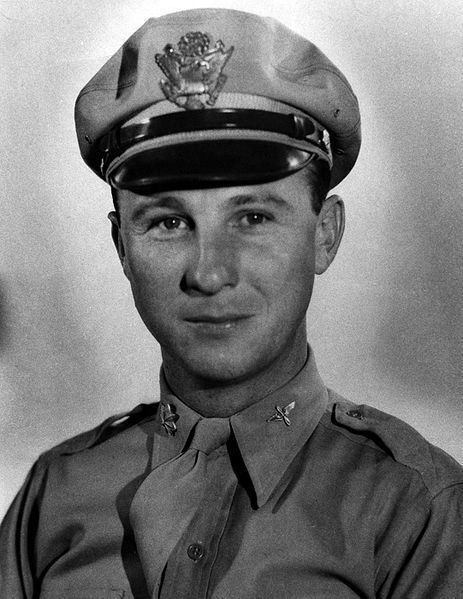
20/12/2015 Douglas SBD Dauntless US Navy, Airfix
The dive bomber Douglas SBD Dauntless is mostly known for it´s crucial role in
the Battle of Midway in 1942; this large naval battle was the turning point in
the Pacific War. While the torpedo bombers failed in their task, the daring
Dauntless pilots delivered the deadly blows that sunk most of the Japanese
carriers in this battle; a loss the Japanese Navy never recovered from. In
fact, the Dauntless was responsible for sinking more Japanese ships than any
other Allied aircraft in the war.
The crews liked the Dauntless; it was sturdy, nimble and easy to fly. For a
dive bomber, it carried a respectable offensive & defensive arnament that even
could engage enemy fighters, if necessary.
It stayed in active service longer as anticipated – the successor, the more
powerful Curtiss SBC Helldiver, experienced serious teething problems and
entered service with much delay. Even then many crews preferred the Dauntless
over the troubled Helldiver. A land-based version for the US Army Air Force,
the A-24 Banshee, was introduced later and also delivered to the Free French
Air Force in Europe.
This kit is from Airfix. The mould is from the 1960s and has been re-issued
many times. It´s pretty basic for today´s standards so I decided to “pimp” it
up a bit. One of the prominent features of the SBD are the large dive brakes;
I spend a few hours drilling out the holes (what fun !) and cut the brakes out
to display them in raised position. I applied rather heavy weathering and
paint chipping to get a battle-worn look. I discarded the decals from Airfix
and used different ones from Printscale. The model represents an SBD-3 that
was stationed on the USS Lexington, a carrier that was sunk in the Coral Sea
Battle im May 1942. Apparently the pilot recorded seven kills. The kit itself
is OK and it looks like a Dauntless; of course there are more detailled kits
out there but the Airfix costs around 8-10 Euro. Cannot do wrong with this
one.




18/11/2015 Mitsubishi A5M Claude Imperial Japanese Navy, Fujimi
Before the
„Zero“, there was the „Claude“. Introduced in 1935, the Mitsubishi A5M was the
first aircraft carrier-based monoplane figher aircraft in the world and the
predecessor of the famous Mitsubishi A6M Zero.
Like the Zero, the Mitsubishi A5M “Claude” (“Claude” was the allied reporting
name) was designed by Jiro Hirokoshi. It was similar to other first-generation
fighter monoplanes of the time; a fixed gear was used to save weight and the
cockpit was still open – a version was build with closed cockpit but this was
hated by the pilots and abandoned soon. The all-metal fighter was one of the
first aicraft to be equipped with an external drop tank, a new innovation at
the time.
The Imperial Japanese Navy used the A5M with considerable success in the
Sino-Japanese War. The nimble Claude was superior to most of the Russian
designed- aircraft it encountered during the conflict; only the Polikarpov
I-16 was somewhat equal. By the time of the attack on Pearl Harbor the Claude
was already outdated and largely withdrawn from frontline service and replaced
by the Zero. The Allied only had brief encounters with the A5M; by 1941 it was
used primarly as a trainer aircraft. No surviving aircraft is known to be in
existence today.
The model depicts the rather colorful A5M4 W-102 flown by Petty Officer Matsuo
Hagiri of the Soryu carrier group in summer 1939. Hagiri ended the war as an
ace with 14 victories.
The kit is from Fujimi and a really good one. Too bad Fujimi kits are somewhat
hard to get outside Japan as they have no worldwide distribution. Ebay of
course is always a good source.




01/11/2015 Heinkel He 280 Luftwaffe, RS Models
The Heinkel He 280 was the
first jet fighter aircraft in the world, but it never reached operational
status due to ongoing technical problems. In August 1939 the first jet
aircraft ever, the Heinkel He 176, made it first flight. Realizing the
potential of jet propulsion, the Heinkel works immediately began development
of a two-engine fighter aircraft. It was a very ambitous and prestigious
work for the company, as it was known at the time that other German
companies (Messerschmitt, Junkers, BMW) were also working on jet aircraft
and engine designs and Heinkel wanted to be the first to have it ready.
The airframe was finished in the summer of 1940 but it could only be used
for unpowered gliding tests at the time – the jet engines, the He 8s
(developed in-house by Heinkel) were not ready for flight testing. It was
March 1941 when the first powered flight of the He 280 took place (a full
year before the Messerschmitt Me 262 !). It was a success but the plane and
the engines were far from combat ready. The engines still lacked power and
hat serious reliability problems. Re-designs were necessary and it took
almost another year until the next test flights could be performed.
Heinkel´s technological head start now had completely vanished. By this time
the RLM (the German Air Ministry) lost patience with Heinkel and demanded
that the He 280 should be tested with other engine designs, namely the
Junkers 004 and the BMW 003 jet engines. But these new engines were also not
ready yet for field use and adapting the He 280 to these much larger engines
was difficult. In the end, after many delays by Heinkel, the RLM cancelled
the Heinkel He 280 in late 1943. Messerschmitt was now in the run for the
first operational jet fighter, the Me 262.
In direct comparison, the Me 262 was the better aircraft as it had superior
flight performance. The He 280 experienced tail vibrations at high speeds
and a new conventional tail would have to be designed for a serial
production. In the end, nine He 280 were build and some of them were later
used as test platforms. By the end of the war all airframes were broken up
and is it believed the Russians picked up what was left of them.
While the He 280 was ultimately a failure, it was also one important
milestone in aviation: it was the first aircraft ever equipped with an
ejection seat. This model depicts prototype aircraft V3, first flown by
Heinkel test pilot Fritz Schäfer in the summer of 1942.
Another “exotic” aircraft so this has to be a short run kit, of course. This
time from RS Models. The usual fitting & molding problems of these kits
aside, I had one annoying issue with this one, no info about the needed nose
weight was provided so I installed not enough weight and the aircraft ended
up as a tailsitter
 I re-opened parts of the front fuselage and filled it with little metal
pellets.
I re-opened parts of the front fuselage and filled it with little metal
pellets.



20/09/2015 Hawker Hurricane Mk I Royal Air Force, Airfix
Always in the
shadow of the famous Spitfire, the role of the Hawker Hurricane for the Royal
Air Force was nevertheless a very important one; especially in the early part
of the conflict and the Battle of Britain.
Designed in 1935, it was one of the first modern fighter monoplanes in the
world with advanced features like rectractable gear and a closed cockpit.
Although the internal structure of the aircraft was still very much like the
older Hawker biplanes; with tubular metal/wood bracing covered by a fabric
skin – the earliest Hurricane variants even had fabric-covered wings. So it
was quite heavy and the thick wings limited top speed. The Hurricane was
rugged, reliable and easy to fly; and usually novice pilots prefered the
Hurricane over the Spitfire as it was easier to handle and a better weapons
platform.
During the Battle of Britain the Hurricane was slightly outclassed by the
German Messerschmitt Bf 109; although in the end the pilots made the
difference as the performance gap was really not that big. The Hurricane was
responsible for 55% of the German losses during the Battle of Britain. Later
in the war, the design limits of the Hurricane became more apparent and later
variants were used as fighter-bombers or night fighters.
This particular Hurricane Mk I belonged to 242 Squadron based at RAF Base
Duxford, Cambridgeshire and was flown by Douglas Bader (1910-1982), one of the
most popular WWII aces. His career is quite remarkable as he was a
double-amputee – he lost his lower legs in a flying accident in 1931.
Nevertheless he returned to RAF service with new prosthetic legs and was a
very prominent leader during the Battle of Britain and scored many of his 20
victories with the Hurricane. In 1941 he was forced to bail out over Germany
and spend the rest of the war as a POW. As he lost an artifical leg during his
escape from the stricken aircraft, German Luftwaffe officials arranged
delivery of a new leg that was parachuted by a British bomber a few days later
!
This is a new mould from Airfix and it is really great; one of the best kits I
have build in recent times. Really recommended. Decals are from Techmod.


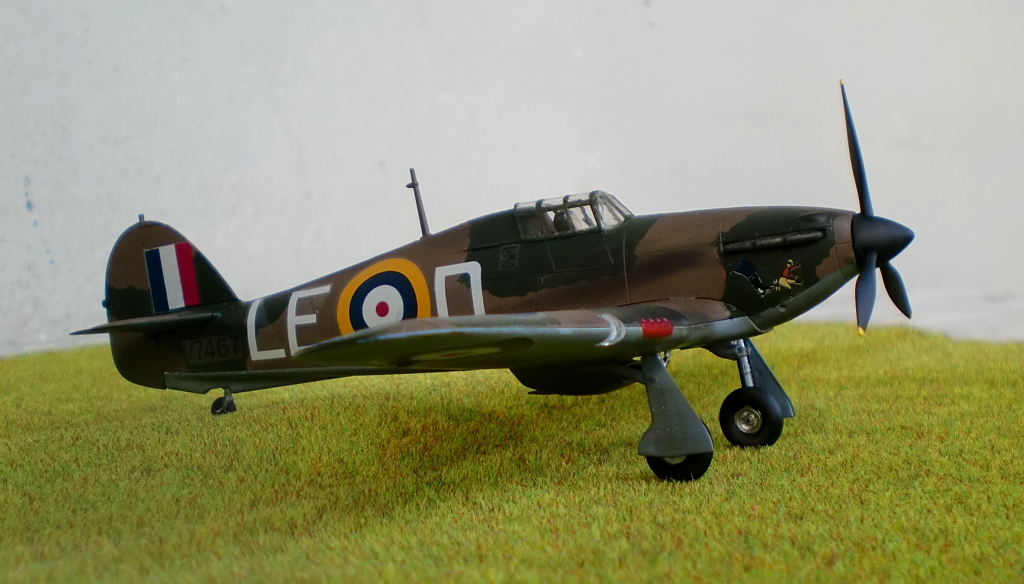

09/09/2015 Piper L-4 Grasshopper US Army Air Force, Kovozavody Prostejov
Liaison aircraft and their pilots did not receive a lot of attention in WWII
or later years but they were crucial for the war efforts of every
participating nation. Using small, rugged and usually unarmed planes, they
were used for many roles like reconnaissance, artillery spotting, courier &
VIP transport, and air ambulance. Today the helicopter has taken over many
of these tasks so liasion aircraft could be considered a thing of the past.
Many liaison aircraft were derived from civilian aircraft designs, so was
the Piper L-4 Grasshopper, developed from the Piper Cup light aircraft, one
of the most popular aircraft designs of all time with over 20.000 build. The
only real difference to the civilian Cup was the extensive canopy glazing of
the L-4.
One of the the primary training aircraft of the US Army Air Force before
WWII, many pilots experienced their first flying lessons with the Cub. A
simple and easy to maintain aircraft, many L-4 were surplus after the war
and ended up in private hands. Replicas of the Cup are still build today.
This particular L-4 was the personal transport aircraft of famous (and
controversial) US Army General George S. Patton in France, 1944.
For such an important airplane it is somewhat amazing that there is no
mainstream plastic kit in 1/72 avaiable, so once again I put my hands on the
infamous short run kit, this time from Kovozavody Prostejov. This was such a
frustrating build I considered putting it away a few times. When you cannot
find a photo of a finished model on the internet you should be warned, I
guess. In the end the finished model look quite Ok. But I really lack the
ultimate skill and patience for these tricky builds. I definetly should
stick with Airfix or Tamiya…

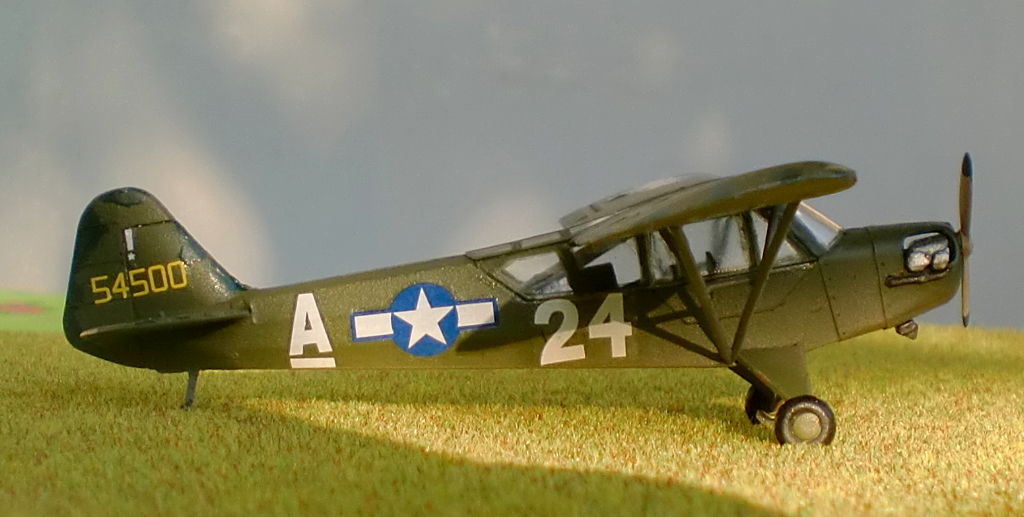

09/08/2015 Aichi D3A Val Imperial Japanese Navy, Fujimi
The Aichi D3A „Val“
dive bomber was responsible for sinking more allied warships in the Pacifc
conflict than any other Japanese aircraft type. Developed in the 1930s, the
Val had some resemblance to its German counterpart, the Ju-87 “Stuka”.
Although already outdated by the time the war started, it was one of the main
aircraft types used in the attack of Pearl Harbor and the following raids. It
was later relegated to secondary duties but as the successor aircraft, the
Yokosuka D4Y, was delayed, it remained in service until the end of the war.
The Val was then used as a land-based unit, for training duties, and sometimes
even as a fighter aircraft as it was quite maneuverable without the bomb
payload.
This D3A Val type 11 was stationed on the flagship aircraft carrier Akagi and
participated in the second attack wave on Pearl Harbor on December 7, 1941.
Flown by officer Takashi Ono, it was painted in the standard IJN grey scheme.
This kit from Japanese company Fujimi is build out of the box. It is not the
newest mould but I like it much better than the ancient kit from Airfix.



30/07/2015 Grumman TBF Avenger US Navy, Academy
The Grumman TBF Avenger (or
TBM Avenger when build by General Motors) was one of the largest and the
heaviest single-engine aircraft in service during WWII. Developed as an
carrier-based Torpedo bomber, it saw extensive action for the US Navy in the
Pacific Theatre. It had a three-man crew, with a pilot, a rear gunner and a
bomb operator/ventral gunner in the lower fuselage.
The design was succesful and and it remained in service until the 1960s and
was also used by other Naval Forces in the World. In commercial service,
modified Avengers were still used in Canada as firefighter/water bombers until
this decade. Many still can be seen flying at air shows.
Some prominent names served their duty on the Avenger; actor Paul Newman was a
rear gunner during WWII but for sure the most notable Avenger pilot was George
H.W. Bush, the 41st President of the United States. He entered service 1943
aged 19, and he was the youngest navial aviator at this date. He was
transferred to the light aircraft carrier USS Jacinto were he was promoted to
Lt. (Junior Grade) on August 1, 1944. Photos of his aircraft are very hard to
find but he must at least flown two different Avengers, “White 2” and “White
3”. Both aircraft were named “Barbara” for his future wife, Barbara Pierce.
“White 2” was probably the aircraft lost during the attack on the Japanese
island of Chichjima in September 1944. Bush survived but the other crewmembers
perished.
The Kit is a rather old one from Academy with mediocre detail, although I
think it looks reasonably good. Decals are from Print Scale.




03/05/2017 Boulton Paul Defiant Royal Air Force, Airfix
Although it was
often dismissed as a failure, the Boulton Paul Defiant is still a very
interesting subject to model. Designed for the Royal Air Force in the late
1930s as a bomber interceptor, the Defiant was a so-called turret fighter,
with no fixed forward firing arnament, and solely armed with a hydraulically
powered rotating turret featuring 4 machine guns. The idea was that this
configuration should cause havoc among enemy bomber streams, and also enabling
the Defiant to defend itself against fighter aircraft. A concept that proved
to be ultimately flawed.
During the first weeks of the Battle of Britain the Defiant was quite
succesful, as many Luftwaffe fighter pilots initially believed they were
encountering the Hawker Hurricane (which looked similar) only to be surprised
by heavy machine gun fire when sneaking up from behind. But soon the Germans
changed their tactics, and the lack of forward firing equipment proved to be
fatal when attacked from the front. Also the Defiant was overweight and not as
fast and agile compared to the Bf 109. By the summer of 1940 losses were
becoming unacceptable for the RAF, and the Defiant was removed from daylight
operations. The air gunners were especially endangered as they could often not
leave a stricken aircraft due to the cramped turret.
As as night fighter the Defiant fared much better until it was eventually
replaced by more advanced designs like the Beaufighter or Mosquito. All in all
it had a rather short service life. Only one complete aircraft survives, and
is displayed in night fighter livery at the RAF Museum London.
This model depicts a Defiant Mk.I Nightfighter from No. 151 Sqd, RAF Wittering
in February 1941. The Defiant has been in the Airfix catalogue since the
1960s, but earlier this year they released a completely new tooling that is up
to todays standards. And it is really good ! Details are great, fitting is
perfect, nothing to complain here. Highly recommended.
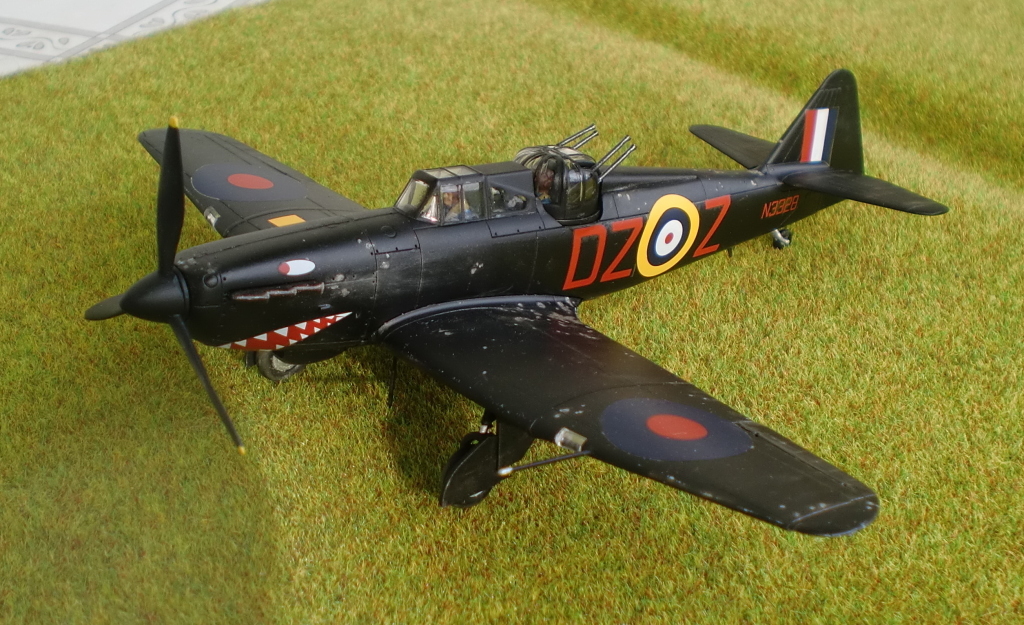
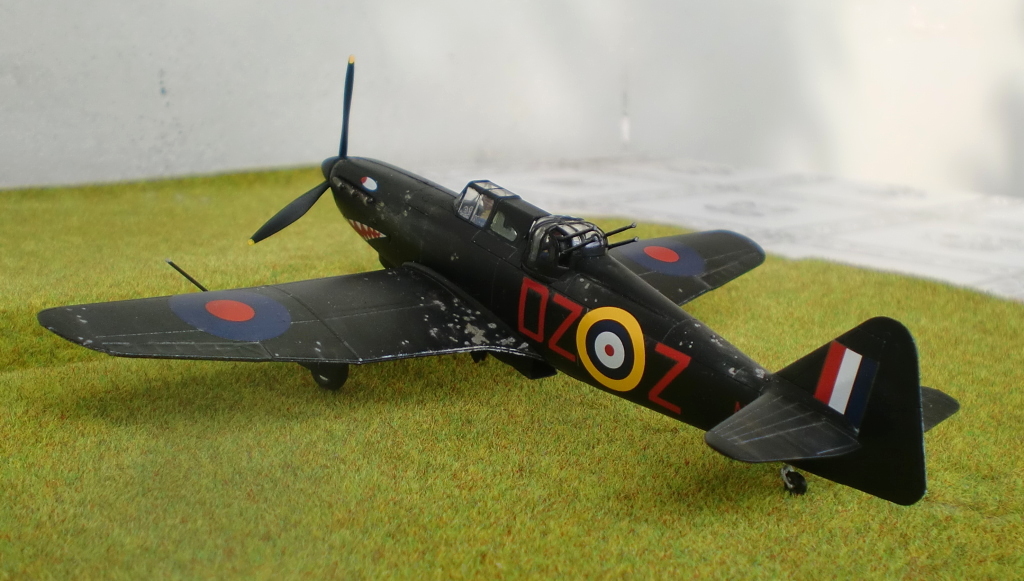

19/04/2015 Caproni-Campini N.1 Regia Aeronautica, Valom Models
When test
pilot Mario de Bernardi took the skies with the experimental Caproni-Campini
N.1 jet aircraft on August 27th 1940, this was considered the beginning of the
jet age. Unknown at the time was the fact that exactly one year earlier, the
Germans successfully tested the Heinkel He 178 jet aircraft. But the German
project was kept secret – the Italian facist regime of the time, however,
hailed the flight of the Caproni as a great propaganda victory and the
aircraft was even presented to Mussolini himself. Goverments all over the
world sent their congratulations to Italy.
But technically, the N.1 jet aircraft was not powered by a turbojet/turbofan
engine as we use it today. The engine, designed by Ing. Secondo Campini, was
called a “motorjet” or “thermojet” engine – it used a conventional V12 piston
engine to drive a three-stage compressor in the front. The compressed air was
forced into the rear over an aerodynamic exit cone where it was accelerated.
Fuel could be transferred to a combustion chamber in front of the exit cone,
where it ignited and delivered extra power, in a way this was the first type
of afterburner used in a jet. The entire propulsion system was similar to a
ducted fan design.
Two Caproni-Campini N.1 prototypes were built and used over a time period of
two years to test the efficency of the thermojet engine, but performance was
very poor. In fact, even with activated afterburner, the aircraft was much
slower than the Fiat biplanes still used by the Italian Air Force at the time
! The thermojet proved to be a technical dead end and the project was quietly
abandoned in 1942. One prototype survived and is now displayed at the Vigna di
Valle Aeronautical Museum in Rome. Design curiosities of the N.1 included dual
flight controls and a pressurized cabin.
Another Czech short-run kit and this had it all: Plastic parts, PE Parts,
Resin Parts, Vacuform canopy, horrible instructions and fitting from the 1950s
(although this kit is from 2013). A lot of small detail parts for the cockpit
(which you cannot see at all with closed canopy !) and these parts seem to be
molded in 1/48, not 1/72. Whatever. I think I´m finally done with this sort of
kit, not my taste and a little bit out of my skill range. I´m not so happy
with the final result, but see by yourself:




04/04/2015 Mitsubishi A6M Zero Type 52, Imperial Japanese Navy, Hobbyboss
I did not plan to model aircraft from the Pacific War but there is something
brutish about the Mitsubishi A6M Zero that fascinated me. For quite some
time in the early 1940s the Zero could be considered the best fighter
aircraft in the world. Designed to be the ultimate dogfighter, it combined a
lightweight but sturdy construction and excellent maneuverability that
caught the Americans by surprise. But later, with better aircraft and
tactics, things changed for the Allies as they exploited the Zero´s apparent
weaknesses: little or no armour, lack of selfsealing fuel tanks,
insufficient engine upgrades and a general decline of the quality of
Japanese pilots.
This aircraft, a Zero Type 52, was flown by ace Takeo Tanimizu in June 1945.
Japanese aircraft usually had a very worn out look late in the War; chipped
paint was a common sight. For the first time, I tried a technique to
simulate chipped paint and it worked quite well. After brushing a base coat
of aluminium, salt is applied to the locations were chipped paint patches
should appear. After that, the finishing coat of paint is applied, and the
salt removed after drying. And I used a sawfile to remove some additional
paint, all in all it looks quite good and I believe it is not overdone after
checking some prototype photos – in fact, the real ones looked even worse !
The kit itself is another quick-build from Hobbyboss.




15/03/2015 Messerschmitt Me 328 A Luftwaffe, HUMA Models
Originally
conceived as a „miniature“ or „parasite“ fighter, the Messerschmitt Me 328
design went through a lot of changes until the project was finally
terminated. The tiny fighter was initially designed to be launched
airborne to escort bomber formations. It would have to land on a skid as
no landing gear was provided. It was powered by two Argus-Schmidt
pulsejets engines, the same engine used for the V-1 flying bomb. These
engines were a lot cheaper to build compared to piston or turbojet
engines, although their lifespan was very limited.
The Me 328 A, as depicted here, was planned as a fighter, and the Me 328 B
as a fighter-bomber. Unpowered glider tests were succesful, but powered
tests revealed that the Pulsejets were unsuitable – the airframe could not
withstand the excessive vibration and heat of the engines, and they were
inefficient at medium and high altitudes. Different engine layouts were
tested without success and the project was finally cancelled in 1944.
This is a short-run kit produced in the 1990s by the now defunct German
manufacturer HUMA. For a short-run kit, it went together surprisingly
well. The set also included the Me 328 B fighter-bomber, I will build this
one later.




15/02/2015 Fieseler Fi-103R Luftwaffe, MAC Distribution
The Fieseler
Fi-103R (codename "Reichenberg") was basically a manned version of the
V-1 flying bomb, intented for suicide bombing runs. In a desperate move
to change the tide of war, several "Kamikaze" aircraft projects were
researched by the Luftwaffe; it was finally decided that the V-1 could
be converted for piloted flight. The basic design was largely unchanged,
including the Argus pulsejet engine, and a volunteer squad of pilots,
the Leonidas squadron, was selected.
Fitted with a 850kg warhead, the aircraft would be launched airborne
from bombers near the target site. Pilot escape before hitting the
target was explicitly planned but this would almost be impossible (800
km/h dive speed, a cramped cockpit and the engine directly behind the
cockpit...). Powered test flights were succesful but the project was
very controversly discussed within the Luftwaffe, and eventually
cancelled. The Mistel concept was regarded as a better solution.
This is another Czech short run kit (from MAC Distribution) with few
parts; it can be completed on a rainy afternoon. Fast and simple.


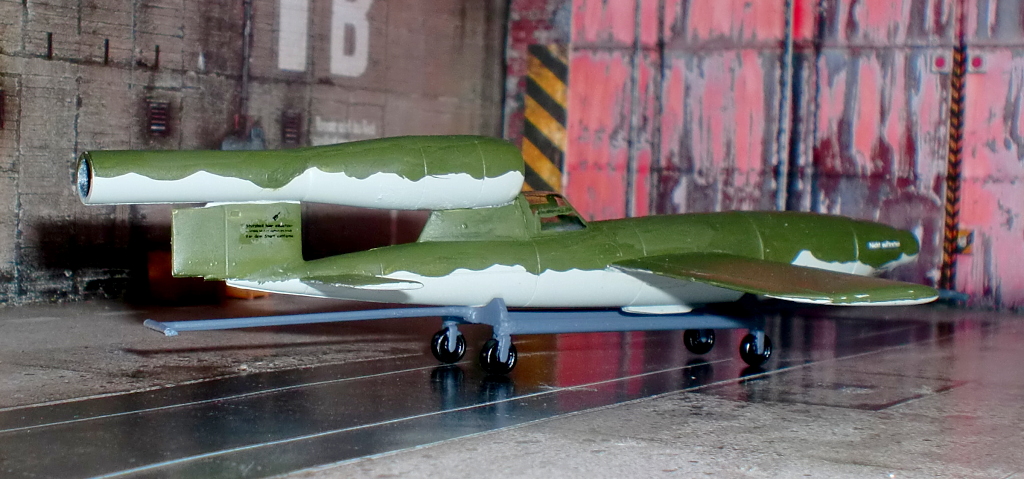
08/02/2015 Petlyakov Pe-2 Red Army Air Force, Hobbyboss
The Petlyakov Pe-2
was a Soviet Dive Bomber and one of the must succesful Soviet designs during
WWII. Over 11.000 were built and they were also used in other roles as
Nightfighter oder Heavy Fighter. This one was operated by the Russian Gards,
40th BAP, Black Sea Fleet in Summer 1944. The crewmembers were E.Stupin
(pilot), P.Glevatsky (radio/gunner) and A.Rodinov (navigator). The lettering
means "For Boris Sofanov", a dedication to the famous russian ace that was
shot down in 1942.
The Hobbyboss kit was a quick build, although it has some accuracy issues and
only basic detailing. I added a pilot figure, antenna mast, and two guns.



17/01/2015 Messerschmitt Bf 109 G-14 Luftwaffe, Academy
Now a "mainstream"
kit from Academy for a change.
With 352 victories, Erich Hartmann is the most successful fighter ace in
aviation history. In February 1945, he took temporarily command of I./JG53
squadron in Hungary. The aircraft he used there, a Messerschmitt Bf109 G-14,
is shown here. It had the famous Hartmann "tulip pattern" on the nose and
was painted in a white winter camouflage.

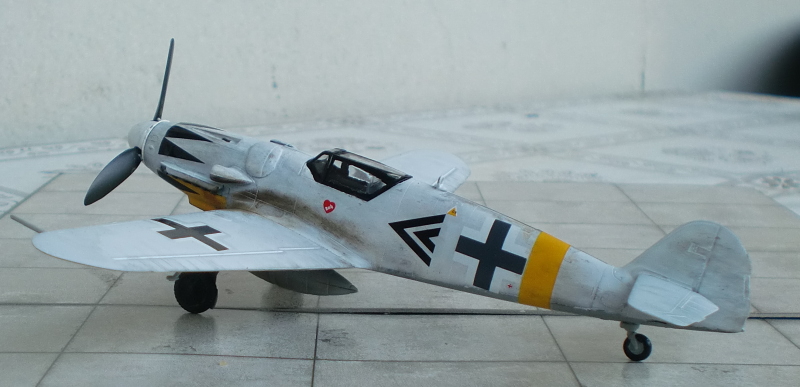

30/12/2014 Blohm & Voss Bv 40 Luftwaffe, Brengun
Another short run kit from
Czech maker Brengun. These kits are quite a challenge (at least for me), tiny
PE parts, bad fitting, inconclusive instructions, but they make quite
interesting models not offered by mainstream manufacturers.
The Blohm & Voss Bv40 was an attack glider prototype by the Luftwaffe in early
1944. It was supposed to be towed in pairs above an allied bomber fleet and
then released for an attack. The pilot, lying prone in the heavily armored
cockpit, had two MK 108 cannons provided. The small dimensions of the glider
would have to be a challenge for the bomber gunner crew. But it never saw
combat, after testing six prototypes the project was cancelled. Would probably
be a deathtrap like the Natter.
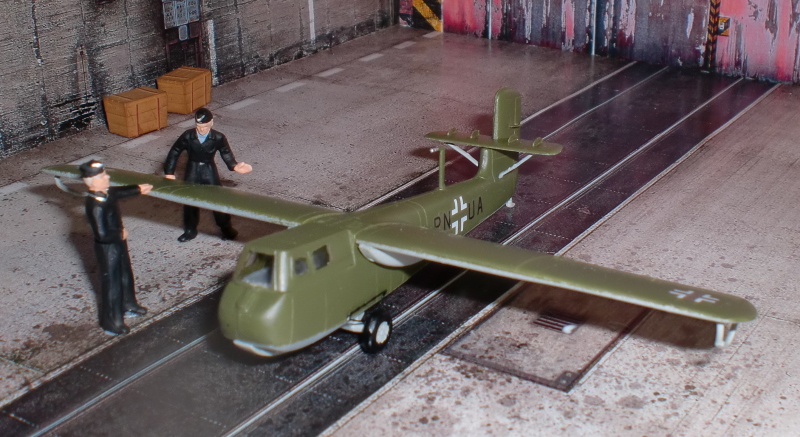


Back to Page 3
To Page 5

























































































